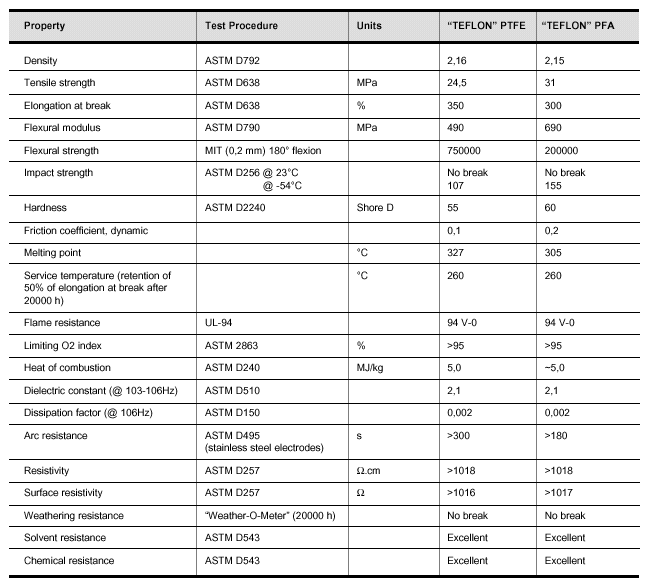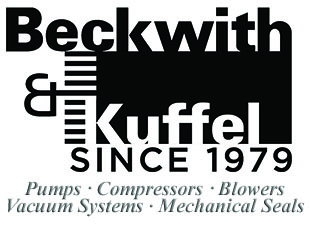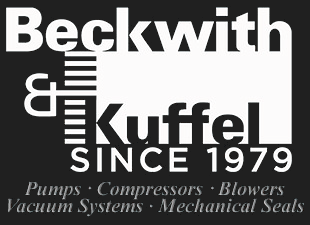With PTFE and PFA linings, the dielectric strength is measured in order to identify faults. This method reliably pinpoints cracks and voids which go all the way through the material but, due to the well-known high resistivity of fluoropolymers, it does not indicate any faults which start 1,5 mm or more under the surface (fig. 5).
For this reason further tests using ultrasonic methods can also be applied. This test measures the distance from the surface of the lining to the metal housing. However, it is unreliable because it does not provide the true lining thickness when a void or porosity is present. In addition, this method is impractical to employ on small parts or small complicated shapes with undercuts and tight radii.
Another method to check for surface defects such as cracks and voids is with the so called ?Met-L-Check? dye penetrant method. But this method is limited to detecting surface defects only.
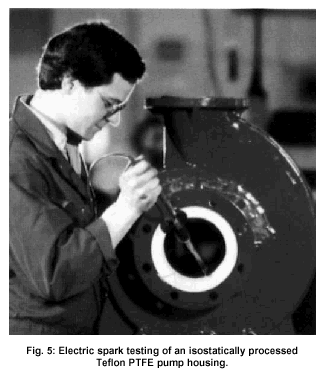
Chemical Structure
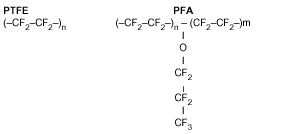
PFA, which is translucent, can reliably be checked optically. Cracks and voids under the surface can be made visible with suitable light sources. Hardly accessible locations in the lining can be examined using cold light lamps and flexible fibre light guides.
Cost Comparisons for Linings
In terms of raw material prices, PFA costs roughly three times as much as PTFE.
This disadvantage can, however, be compensated or greatly reduced, as a function of factors such as the shape to be lined, its size, the number of workpieces to be lined and the processing method adopted. This is possible because PFA neither requires manual process preparation nor finish machining with corresponding material losses.
The use of PFA for lining very large parts is not recommended, because the high material cost would make the part too expensive. Another point to be kept in mind is the cost of tools, which are not amortized when only small numbers of parts are to be lined. Furthermore, there are practical limits to the weight of injected material that molding machines are capable of handling.
Conclusions
More than 20 years of experience with linings for various parts, e.g. valve and pump housings, have shown that PFA has numerous advantages when high thermal and chemical resistance are the main requirements.
The accurate and even wall-thickness that can be achieved with PFA is a major advantage, especially when working with media which have a strong tendency to diffuse.
Practical experience has also shown that PFA gives better barrier properties than PTFE.
Bromine manufacturers report, for example, that the penetration depth of bromine in PFA is about one third less than in PTFE, when operating conditions such as time, temperature and pressure are the same.
PTFE, on the other hand, is still widely used for components of chem- ical valves and other chemical processing equipment where flex fatigue resistance is required.
Typical examples of such applications are bellows, as well as diaphragms in valves and pumps.
For seat rings, plugs, seals and similar parts, PTFE is a suitable and economical material.
A recent trend for parts such as these is to use modified PTFE, as its dimensional stability and hardness are superior to those of standard PTFE.
Chart comparing PFA and PTFE
